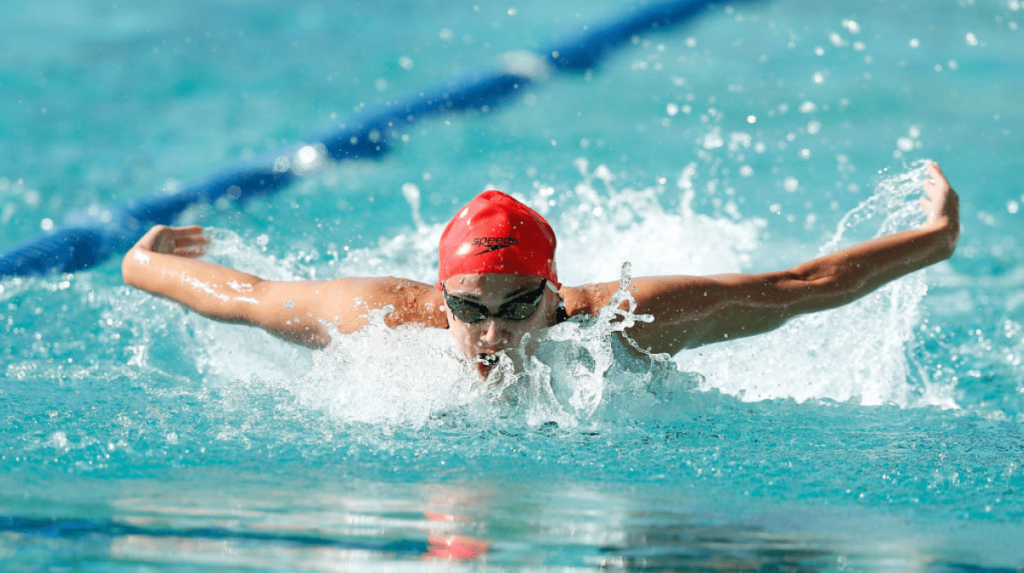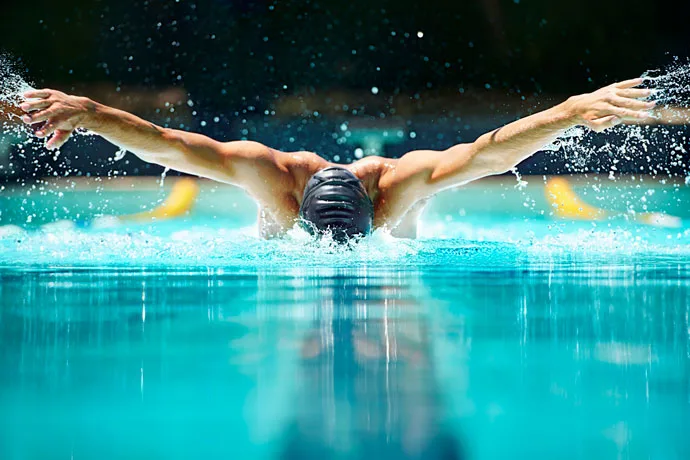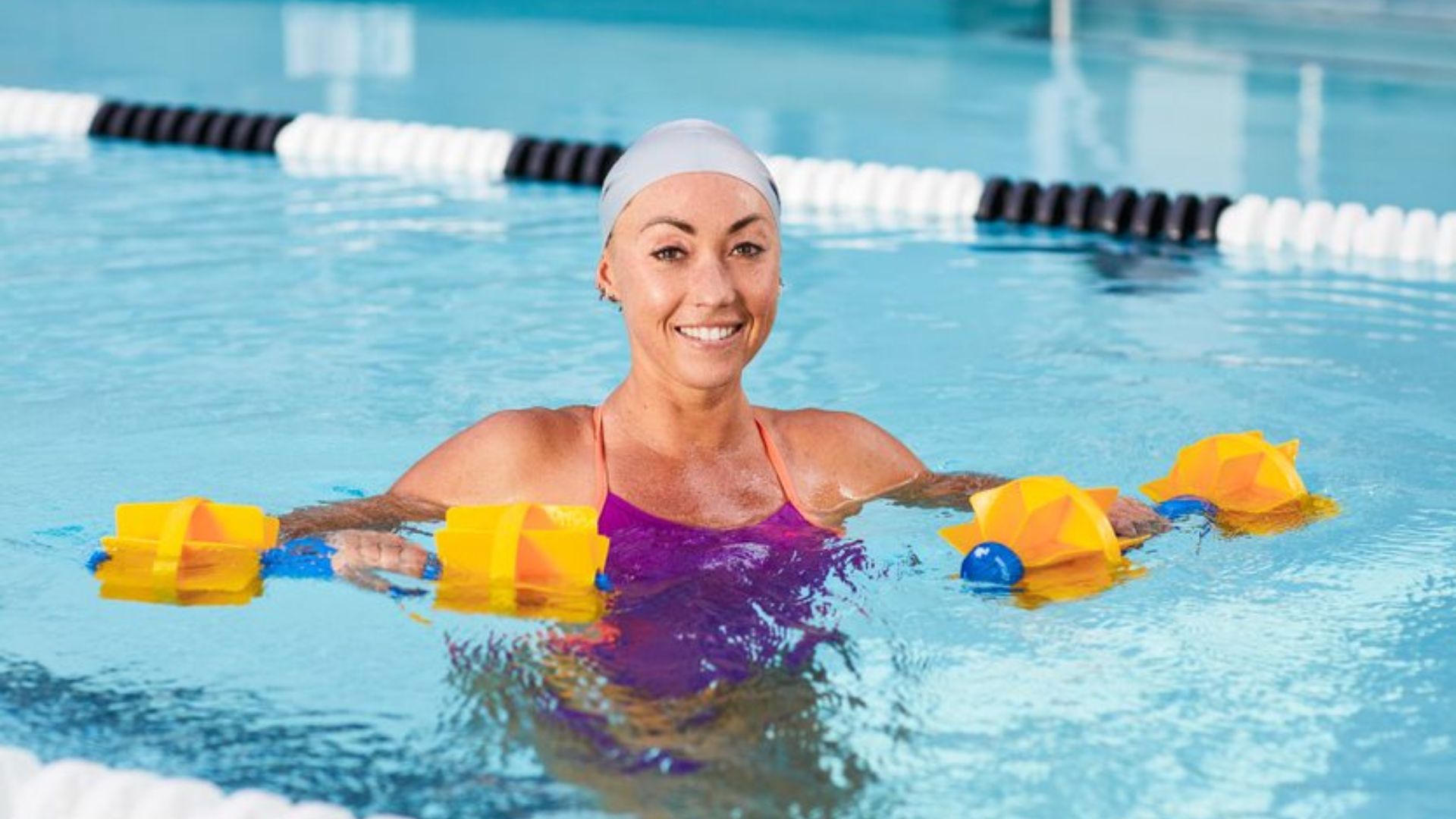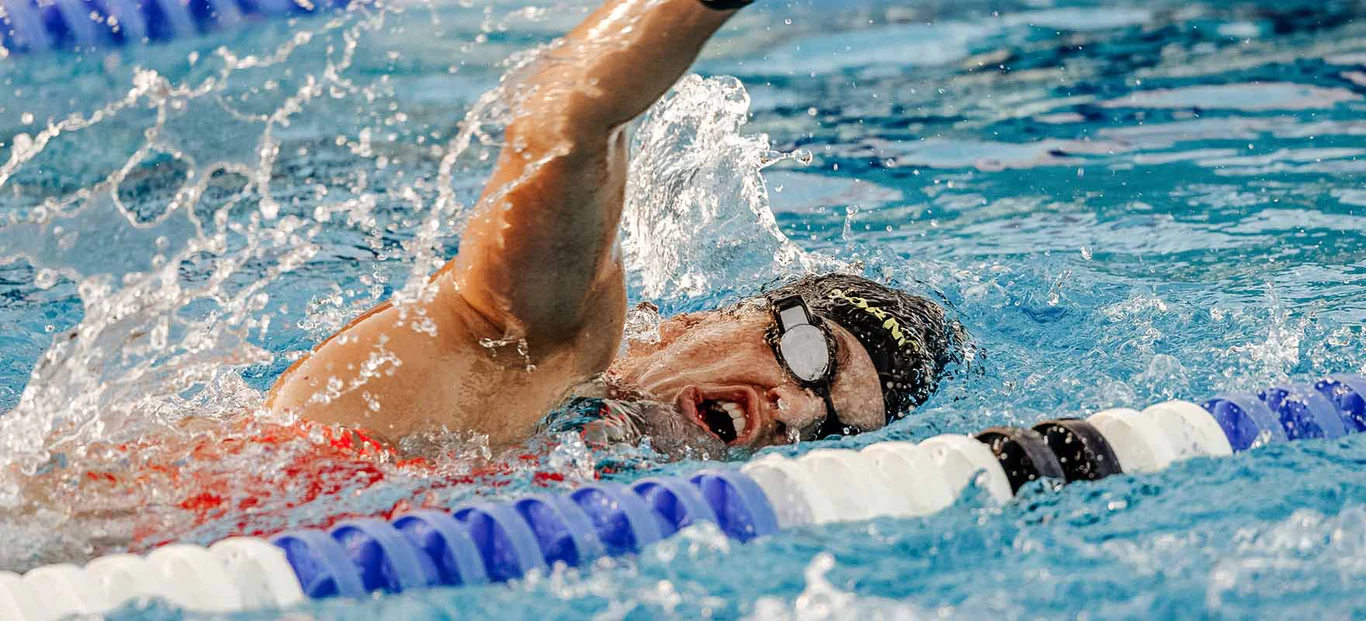The butterfly stroke is one of the most challenging swimming techniques to master. It requires strength, coordination, and endurance. Unlike other strokes, the butterfly involves simultaneous arm movements and a unique dolphin kick. Mastering this stroke can significantly enhance your overall swimming performance. Therefore, focusing on key techniques is essential for proficiency.

Body Position and Alignment
Maintaining a streamlined body position is crucial in the butterfly stroke. Keep your body flat and horizontal, with your head in a neutral position. Engage your core muscles to maintain stability and reduce drag. Moreover, your hips should remain close to the water’s surface to maximize efficiency. Additionally, your body should undulate smoothly without excessive movement. Therefore, mastering body position and alignment is the foundation of an effective butterfly stroke.
Arm Movements
The arm movements in butterfly are powerful and synchronized. Start with your arms extended in front of you. Pull your arms down and outwards in a sweeping motion, then bring them back together under your body. Moreover, keep your elbows high during the pull phase to maximize propulsion. Additionally, ensure a quick and smooth recovery over the water. Therefore, focusing on correct arm movements is crucial for generating speed and power.
The Dolphin Kick
The dolphin kick is unique to the butterfly stroke. It involves a powerful and rhythmic motion that propels you forward. Start with your legs together and your toes pointed. Initiate the kick from your hips, creating a wave-like motion through your body. Moreover, your knees should bend slightly, and your feet should snap downwards with force. Additionally, practice continuous and smooth kicks to maintain momentum. Therefore, mastering the dolphin kick is essential for an efficient butterfly stroke.
Breathing Technique
Breathing in the butterfly stroke can be challenging. Lift your head to breathe during the arm recovery phase. Keep your chin close to the water to minimize resistance. Moreover, take a quick breath and exhale underwater to maintain your rhythm. Additionally, practice bilateral breathing to enhance symmetry and balance. Therefore, focusing on proper breathing techniques is crucial for maintaining endurance and efficiency.
Timing and Coordination
Timing and coordination are critical for a smooth butterfly stroke. Synchronize your arm movements with your dolphin kick. Start the arm pull as your kick begins, and time your breath with the recovery phase. Moreover, maintain a consistent rhythm throughout your stroke. Additionally, practice drills that focus on timing and coordination to enhance your overall technique. Therefore, mastering timing and coordination is key to an effective butterfly stroke.
Common Mistakes and Corrections
Swimmers often make common mistakes in the butterfly stroke. One frequent error is an improper body position, such as lifting the head too high. This increases drag and disrupts the stroke. Moreover, an ineffective kick, such as bending the knees too much, reduces propulsion. Focus on initiating the kick from your hips for maximum power. Additionally, avoid pausing between movements, which disrupts the flow. Therefore, being aware of and correcting these mistakes is essential for improvement.
Drills for Improvement
Incorporating specific drills into your training can enhance your butterfly stroke. The single-arm drill helps focus on arm technique and coordination. Swim with one arm while the other remains at your side. Moreover, the kickboard drill emphasizes the dolphin kick by isolating the legs. Hold a kickboard and perform the kick to strengthen your lower body. Additionally, the three-three-three drill alternates between three strokes of butterfly, three strokes of freestyle, and so on. This drill improves timing and endurance. Therefore, practicing these drills can refine your butterfly technique.
Strength and Flexibility Exercises
Strength and flexibility are vital for performing the butterfly stroke. Incorporate exercises such as planks, leg raises, and Russian twists into your training. A strong core provides stability and supports efficient body movement. Moreover, flexibility in your shoulders and hips enhances your stroke. Practice stretches that target these areas, such as shoulder stretches and hip flexor stretches. Additionally, a strong core and flexible joints reduce the risk of injury. Therefore, focusing on strength and flexibility is crucial for an effective butterfly stroke.
Expert Tips and Insights
Learning from expert swimmers can provide valuable insights. Olympic butterfly champion Michael Phelps emphasizes the importance of a strong core and powerful kick. He advises practicing drills that focus on these elements. Moreover, Phelps highlights the significance of maintaining a relaxed and rhythmic breathing pattern. Additionally, he suggests visualizing the stroke to enhance mental focus and execution. Therefore, incorporating tips from experts can enhance your butterfly technique and performance.
Conclusion
Mastering the butterfly stroke requires dedication and practice. Focus on maintaining a streamlined body position and executing powerful arm movements. Moreover, develop a strong and rhythmic dolphin kick. Practice proper breathing techniques and maintain consistent timing and coordination. Additionally, incorporate drills and strength exercises into your training routine. Learn from expert tips and correct common mistakes. Therefore, by following these key techniques, you can enhance your butterfly stroke efficiency and achieve better results in the pool. Happy swimming!



